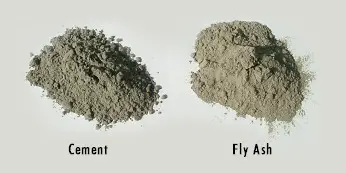Fly ash is the residue that is left from burning coal, and this is formed when the gaseous releases of the coal is efficiently cooled. It is somewhat like a glass powder that is fine in nature. However, the chemical constituents of this residue might vary from one other. Fly ash has several industrial applications and is widely found in power plant chimneys. The material is also used as substitute cement by mixing it with lime and water. The material is embedded with myriad beneficial features and so is being utilized as a significant building material for the construction purposes. This type of concrete is much dense and smooth. Below listed are few of the advantages and disadvantages of fly ash concrete.

The Pros and Cons of Using Fly ash
Fly ash is used in many countries because of its advantages. There are also some disadvantages of using fly ash in concrete. These pros and cons are described in brief below.
The significant benefits of using fly ash in concrete
The advantages of using fly ash in concrete includes the followings.
- Fly ash in the concrete mix efficiently replaces Portland cement that in turn can aid in making big savings in concrete material prices.
- It is also an environmentally-friendly solution, which meets the performance specifications. It can also contribute to LEED points.
- It improves the strength over time and thus, it offers greater strength to the building.
- Increased density and also the long-term strengthening action of flash that ties up with free lime and thus, results in lower bleed channels and also decreases the permeability.
- The reduced permeability of concrete by using fly ash, also aids to keep aggressive composites on the surface where the damaging action is reduced. It is also highly resistant to attack by mild acid, water and sulfate.
- It effectively combines with alkalis from cement, which thereby prevents the destructive expansion.
- It is also helpful in reducing the heat of hydration. The pozzolanic reaction in between lime and fly ash will significantly generate less heat and thus, prevents thermal cracking.
- It chemically and effectively binds salts and free lime, which can create efflorescence. The lower permeability of fly ash concrete can efficiently reduce the effects of efflorescence.
The disadvantages of using fly ash in concrete
There are also some disadvantages of using fly ash that should be considered.
- The quality of fly ash to be utilized is very vital. Poor quality often has a negative impact on the concrete.
- The poor quality can increase the permeability and thus damaging the building.
- Some fly ash, those are produced in power plant is usually compatible with concrete, while some other needs to be beneficiated, and few other types cannot actually be improved for using in concrete. Thus, it is very much vital to use only high quality fly ash to prevent negative effects on the structure of the building.
The aforesaid is few advantages and disadvantages of fly ash concrete. This type of concrete offers many advantages and as mentioned above it also has some disadvantages. There are various other advantages of utilizing fly ash concrete such as it is much easier to place with reduced effort and it is also able to have improved finishing to the structure with such type of concrete. Fly ash concrete can certainly add greater strength to the building.
